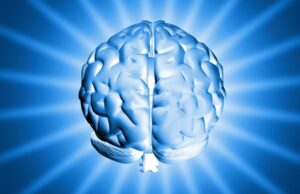 The personal development craze has become a mega multi-dollar industry. It seems like every bookstore features a huge self-improvement section with dozens of titles in every “how to make your life better” topic imaginable. Every weekend, hundreds of self-help workshops are offered across the country. How to get more, have more, be more…it’s all there in three, five or 12 easy steps. And those who have read the books, listened to the tapes, and ventured out to the workshops have felt “helped” (maybe even soared to an enlightened high) — for a while. But shortly after the workshop ends, many (or most) of us have found ourselves sliding back into the old habits and ways of thinking. We found it to be near-impossible to sustain new habits, much less maintain a new perspective.
The personal development craze has become a mega multi-dollar industry. It seems like every bookstore features a huge self-improvement section with dozens of titles in every “how to make your life better” topic imaginable. Every weekend, hundreds of self-help workshops are offered across the country. How to get more, have more, be more…it’s all there in three, five or 12 easy steps. And those who have read the books, listened to the tapes, and ventured out to the workshops have felt “helped” (maybe even soared to an enlightened high) — for a while. But shortly after the workshop ends, many (or most) of us have found ourselves sliding back into the old habits and ways of thinking. We found it to be near-impossible to sustain new habits, much less maintain a new perspective.
So, how is one to make positive changes last? How can one produce lasting empowering changes? What accounts for the failure rate? And is there a solution?
With enough time in the industry to observe the trends, many self-help gurus are admitting that personal development programs may not be the answer. Barbara DeAngelis, whose Making Love Work books and seminars were vastly popular in the 80s, recently confided that she was disappointed that her programs did not create more lasting change. Corporations that had at one time hired motivational speakers to give workshops for boosting performance through personal growth are shying away from such programs, as the results prove to be short-lived.
Several analytical studies have attempted to find reasons for the poor long-term results. An interesting assessment is that most self-help techniques use the least competent aspect of the mind — the conscious mind — to create and sustain change. The conscious mind can create lasting change with great effort, but let’s face the facts…most people are unwilling to put out that effort on a continual day-to-day basis. It could be compared to dieting or giving up smoking. The good news is that there are more effective ways to make lasting changes through the sub-conscious mind.
Research has documented that 95% of our behavior is controlled by our subconscious, leaving only 5% under the control of our conscious mind. According to research, the subconscious mind process information far more efficiently than the conscious mind. While the conscious mind has limited focus, the subconscious is capable of a broad focus. The subconscious takes in information from the environment at an astounding rate, making note of your environment, the lighting, noise, people, etc. The subconscious mind also handles all automatic processes of the body, such as breathing, blinking, and digesting food, most of which is done without any conscious processing.
 The subconscious mind’s job is to learn and run programs so your conscious mind can be free to focus. One way that the subconscious mind functions is through repeating a conscious action over and over again until it becomes automatic. For example, consider learning to walk. When you were first learning to walk you used your conscious mind. You were aware of every step and it took conscious effort and focus. But once you mastered the mechanics, you never really had to consciously think about it again. The “walking program” now resident in the subconscious mind is initiated by an instruction in the form of an intent from the conscious mind. The conscious mind, thereafter, is free to focus elsewhere while the “walking program” runs in the background and you walk without thinking.
The subconscious mind’s job is to learn and run programs so your conscious mind can be free to focus. One way that the subconscious mind functions is through repeating a conscious action over and over again until it becomes automatic. For example, consider learning to walk. When you were first learning to walk you used your conscious mind. You were aware of every step and it took conscious effort and focus. But once you mastered the mechanics, you never really had to consciously think about it again. The “walking program” now resident in the subconscious mind is initiated by an instruction in the form of an intent from the conscious mind. The conscious mind, thereafter, is free to focus elsewhere while the “walking program” runs in the background and you walk without thinking.
It is a great blessing that we have the subconscious mind. Can you imagine how arduous life would be if we had to consciously think how to walk, talk, drive? We’d never get anything done. The subconscious acquires hundreds of thousands of programs that help us navigate life effortlessly without a lot of conscious thought.
From the day you’re born, the subconscious is busy learning programs to help you. In addition to repetitive action which becomes a habit, the subconscious uses intense experience to learn programs. You only need to put your hand in the fire once to have the subconscious mind learn the “keep your body away from fire” program. But this is also where our problems begin. Our subconscious mind has learned programs that hinder our ability to function in life.
For example, if you were bitten by a dog when you were five, it is quite likely that you retained the fear of dogs to this day. Your subconscious quickly developed a program just like it did with the fire. With the presentation of the “dog” stimulus, your subconscious now runs a “dogs are harmful” program and you respond with fear. Consciously, you may be puzzled by your fear, because you now know many people who have wonderful dogs. Nonetheless, you still respond the same way. Why? Because the subconscious mind is habitual and continues to run the “fear of dogs” program in spite of your conscious dislike of the program.
You can sit down in therapy (a conscious mind process) and talk about your fear all day long, but in most cases the fear still remains. It is very difficult — often impossible — to change a subconscious mind process with a conscious mind process. You could put yourself through a process of trying to change your reaction to dogs by gradually de-sensitizing yourself. You could submit yourself in small encounters with friendly dogs and over time you could learn (or unlearn) not to be afraid of dogs. You could attend a dog phobic self-help group. However, it is likely that your reaction would remain to some degree (but at least you’d have friends). With sufficient time, effort and repeated experience, you may come learn that dogs are safe. And once learned, the subconscious mind could run the “dogs are friendly” program and you could experience dogs in a new and delightful way.
Another important characteristic of the subconscious mind is that it has no concept of time. It doesn’t know that the “fear of dogs” program is no longer appropriate just because you are now an adult in the company of friendly dogs. It only knows to run this program at the sight of a dog.
Also, another surprising characteristic of the subconscious is that it can’t fully separate imagination from reality. When you mentally replay the experience of the dog biting you, the subconscious re-experiences the event, believing the experience is real and contemporary. The subconscious re-experiences the drama of the incident over and over again, reinforcing all the neural pathways that strengthen the subconscious program and keep it ready to run at the sight of a dog.
 What operates and initiates the running of the subconscious mind’s program? Beliefs. Some beliefs are developed when we repeat a thought or an experience many times over, while other beliefs can emerge almost instantly as a result of a one-time learning experience. One of the purposes of beliefs is to organize experience so that we don’t put ourselves in situations that could be harmful to us. Beliefs act as a governor to our experience. Again, using the dog example, through repetition of this frightening experience in our own mind we develop the belief that dogs are harmful. This belief then initiates the “fear of dogs program” at the sight/sound/smell etc. stimulus of “dog.” The belief becomes a filter through which we live in our world. Beliefs however, exist on a subconscious level just under our conscious awareness.
What operates and initiates the running of the subconscious mind’s program? Beliefs. Some beliefs are developed when we repeat a thought or an experience many times over, while other beliefs can emerge almost instantly as a result of a one-time learning experience. One of the purposes of beliefs is to organize experience so that we don’t put ourselves in situations that could be harmful to us. Beliefs act as a governor to our experience. Again, using the dog example, through repetition of this frightening experience in our own mind we develop the belief that dogs are harmful. This belief then initiates the “fear of dogs program” at the sight/sound/smell etc. stimulus of “dog.” The belief becomes a filter through which we live in our world. Beliefs however, exist on a subconscious level just under our conscious awareness.
Over time, the subconscious develops thousands of beliefs that govern thousands of programs. We have a belief for just about everything, including who we are (our identity) and what we can and can’t accomplish in the world. We may believe “I am a confident of accomplishing anything I put my mind to. I am intelligent… good looking… loving… caring… ambitious…” Or not. We may also have beliefs about other people: “People are generally trustworthy…dependable…caring…” Or not. We have beliefs about our world: “The world is a benevolent place to live…” Or not.
A person who believes that they can accomplish anything that they put their mind to will react very differently from a person who believes they will fail. The person with a positive subconscious belief will probably initiate a program for learning. The person with a negative belief will initiate a different subconscious program like, “Let me out of here now, before I embarrass myself!” When our beliefs hold us back from doing what we want to do in life, or put limits on reaching for all that we can be, we have limiting beliefs.
Just like the programs we have adopted, our limiting beliefs are held on the sub-conscious level. Think as we may (consciously) that we should and want to believe differently, the “failure” belief still persists on the subconscious level. So when we subconsciously believe “I will only be valued if I am a caretaker”, our program revs up, runs out and finds someone to take care of, and we find ourselves (once again) doing all the work in a relationship.
Gaining access to the subconscious mind and the limiting beliefs that govern our reactions and behavior is the most expedient way to change. As a coach, I now use a process called PSYCH-K® to help my clients to quickly make powerful and lasting changes to their beliefs. PSYCH-K® stimulates both hemispheres of the brain, which allows the subconscious mind to be reprogrammed quickly and easily. Once a belief is changed, the responses to previously challenging situations also changes; it’s automatic!
In summary, your life is a reflection of your beliefs. These beliefs – usually subconscious – are the cumulative effect of life-long programming. As a result of past negative programming, we tend to think and behave in self-defeating ways. PSYCH-K® provides a user-friendly way to rewrite the “software” of your mind by changing beliefs that sabotage you into beliefs that support you…quickly and easily.
When you rewrite the “software” of your mind, you change the “printout” of your life.


